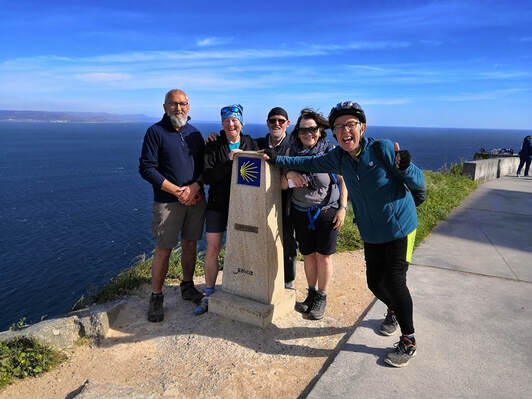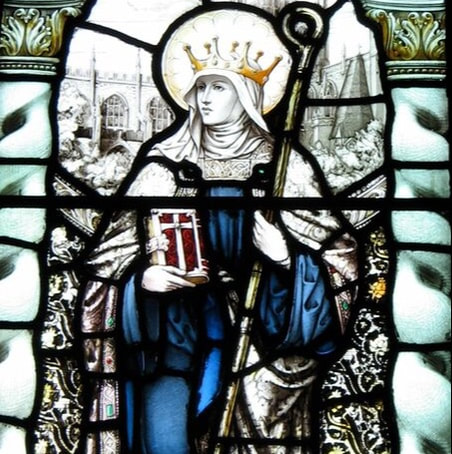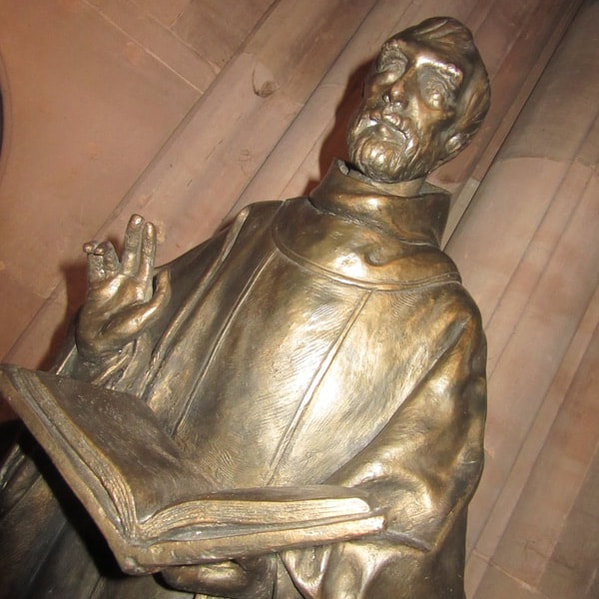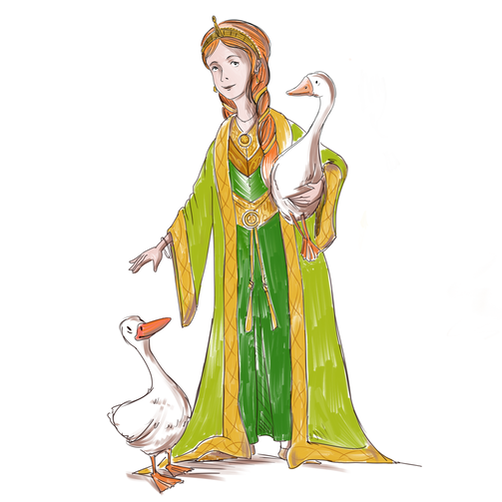Rediscovering Pilgrimage
The last twenty years have seen a revival of interest in the idea and practice of pilgrimage; the famous Camino to Santiago in northern Spain now welcomes over 300,000 walkers annually and across the UK, ancient pilgrimage routes are being rediscovered and new routes created.
Mediaeval pilgrims set off in search of healing, forgiveness or courage to face life’s difficulties and some were looking for adventure. These days people go on pilgrimage walks for many reasons: some are taking a break from the demands of everyday life with time to think and reflect. Others simply want to enjoy the benefits of walking in nature. Some people are motivated by faith and others walk to practice mindfulness. Writer Robert McFarlane comments that pilgrimage is about “the outer landscape prompting subtle exploration of the inner”, for pilgrimage is a journey inwards as well as outwards.
Whatever their motivation, all walkers on The Two Saints Way can benefit, as they experience the countryside, towns and cathedral cities of Cheshire and Staffordshire along the route.
Whatever their motivation, all walkers on The Two Saints Way can benefit, as they experience the countryside, towns and cathedral cities of Cheshire and Staffordshire along the route.
The British Pilgrimage Trust

You may be interested in checking out The British Pilgrimage Trust's website which has lots of information about contemporary pilgrimage and links to other pilgrimage and long-distance walking routes too.
The BPT: "believes that pilgrimage in Britain today should not attempt to imitate Medieval forms of religious exclusivity. Instead, we are aiming to renew the tradition to fit with modern needs. To this end, the BPT aims to help pilgrimage become a spiritual activity open to all, without religious prescription. The path is open to everyone."
Now a Charitable Incorporated Organisation, their core goal is to “advance British pilgrimage as a form of cultural heritage that promotes holistic wellbeing, for the public benefit.”
Routes: This link will take you to a page on the British Pilgrimage Trust website, with links to several pilgrimage routes in the UK.
The BPT: "believes that pilgrimage in Britain today should not attempt to imitate Medieval forms of religious exclusivity. Instead, we are aiming to renew the tradition to fit with modern needs. To this end, the BPT aims to help pilgrimage become a spiritual activity open to all, without religious prescription. The path is open to everyone."
Now a Charitable Incorporated Organisation, their core goal is to “advance British pilgrimage as a form of cultural heritage that promotes holistic wellbeing, for the public benefit.”
Routes: This link will take you to a page on the British Pilgrimage Trust website, with links to several pilgrimage routes in the UK.
The Two Saints of the Way
In medieval times, particular places became a magnet for pilgrims because they either contained some important relics or because they were the burial place or shrine of a saint. Chester and Lichfield were the resting places of St Werburgh and St Chad respectively. Both cities were therefore important in their own right as pilgrimage destinations and they were also stopping places for those going on pilgrimages to such places as Holywell or Bardsey Island in Wales or those travelling to Canterbury or even as far as Rome and Jerusalem.
These two saints were key figures who lived at about the same time in the seventh century and by their labours they brought about a complete change in the religious and cultural landscape of Mercia. Mercia was a powerful kingdom between the seventh and tenth centuries, occupying a somewhat larger area than the Midlands today and including at its greatest extent all of England south of the Dee and the Humber and north of the Avon and the Thames.
Up to the last quarter of the seventh century, Mercia was still largely pagan but Christianity was reaching into Mercia from two different directions and had somewhat differing emphases. What some have termed Celtic Christianity had spread from Ireland via Iona to Lindisfarne in Northumbria through such personalities as St Columba and St Aidan. The kind of Christianity that was based in Canterbury in Kent was more deeply influenced by Rome. It is believed that our two saints were influenced by both these strands but there was certainly no evidence of a competitive or divisive spirit in either of them.
These two saints were key figures who lived at about the same time in the seventh century and by their labours they brought about a complete change in the religious and cultural landscape of Mercia. Mercia was a powerful kingdom between the seventh and tenth centuries, occupying a somewhat larger area than the Midlands today and including at its greatest extent all of England south of the Dee and the Humber and north of the Avon and the Thames.
Up to the last quarter of the seventh century, Mercia was still largely pagan but Christianity was reaching into Mercia from two different directions and had somewhat differing emphases. What some have termed Celtic Christianity had spread from Ireland via Iona to Lindisfarne in Northumbria through such personalities as St Columba and St Aidan. The kind of Christianity that was based in Canterbury in Kent was more deeply influenced by Rome. It is believed that our two saints were influenced by both these strands but there was certainly no evidence of a competitive or divisive spirit in either of them.
Find out more about the saints:






